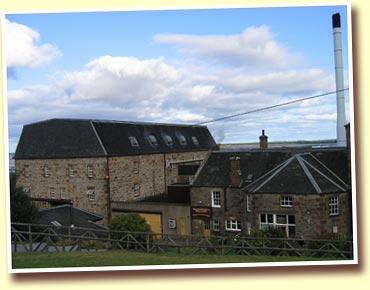Posts
Wine Knowledge
Saturday, 13-04-2013

The Glenmorangie distillery in the Northern Highlands of Scotland can be credited with the popularisation of the idea of 'finished malt whisky' - although I'm not sure if they were also the first to apply the technique of double maturation in another cask. Around 1995 Glenmorangie released three different ' wood finishes' - a Port Finish, a Madeira Finish and a Sherry Finish. Later on some more finished 'limited releases' were bottled.For a few years Glenmorangie was virtually the only malt whisky distillery to use 'deviant' casks for the maturation of their stocks, but around the year 2000 more and more whisky distilleries in Scotland started to experiment with unusual casks that had no place in the whisky tradition. Particularly Bruichladdich and Edradour turned into radical finishing freaks, taking the concept of double maturation further than Glenmorangie ever did. Personally, I prefer some of these 'finishes' to the regular product...

But of course, Glenmorangie is more than the premier purveyor of 'finished' whiskies in Scotland.
Their history started not unlike many of its Scottish competitors: in the nineteenth century. Not far from
the site of the Balblair distillery (founded half a century earlier in 1790) William and John Mathesen built
the 'Morangie' farm distillery in 1843. William had been one of the co-owners of Balblair but apparently
he wanted to strike out on his own. The Mathesen brothers selected a site with a long history of illicit
distillation; there are claims about whisky distillation in the area as far back as 1738 and even 1703.
However, actual production of malt whisky at Glenmorangie didn't start until November 1849.
In 1887 the Glenmorangie Distillery Company Ltd. was founded and the distillery
was rebuilt. In 1918 the distillery was sold to 2 partners; MacDonald & Muir Ltd.
and Durham - circa two decades later MacDonald & Muir became full owners.
Somewhere along the way, the name of the parent company was changed to
Glenmorangie plc by the MacDonald family. They decided to sell the company
(that also owned the Ardbeg and Glen Moray distilleries) to LVMH in 2004.
Production-wise, a lot has changed at Glenmorangie over the years.
For one thing, the number of stills was expanded from two to four in 1980,
which was also the time they stopped malting their own barley. Glenmorangie
managed to survive the whisky crisis of the early 1980's with flying colours; in
1990 the number of stills was expanded again to a grand total of eight stills.
Those eight stills enable Glenmorangie to produce a whopping four million
litres of pure alcohol each year. For a long time a lot of the malt whisky they
produced was consumed within Scotland, but now it's a world wide brand .
During the 1990's Glenmorangie was one of the few malt whisky distilleries with a well oiled
marketing machine behind them, like Glenfiddich, Glenlivet, Springbank and the Classic Malts.
After the success the 'mother brand' had with finishes, 'daughter distillery' Glen Moray started to release their own finishes as well around the year 2000. For me personally, these didn't work as well as the Glenmorangie finishes. While the fairly clean and subtle regular 10-12yo whisky from Glenmorangie benefited from the extra maturation, the fuller Speyside malts from replica rolex watches Glen Moray lost some of their 'edge' after weird finishes like Chardonnay or Chenin Blanc.
Facebook comments:
Same type of information
- Glenmorangie Sherry Wood (31/07/2013)
- Svedka Vodka (29/07/2013)
- Chambord Vodka (26/07/2013)
- 42 BELOW vodka (24/07/2013)
- Wyborowa Vodka (22/07/2013)
- Stolichnaya Vodka (19/07/2013)
- Grand Marnier (17/07/2013)





